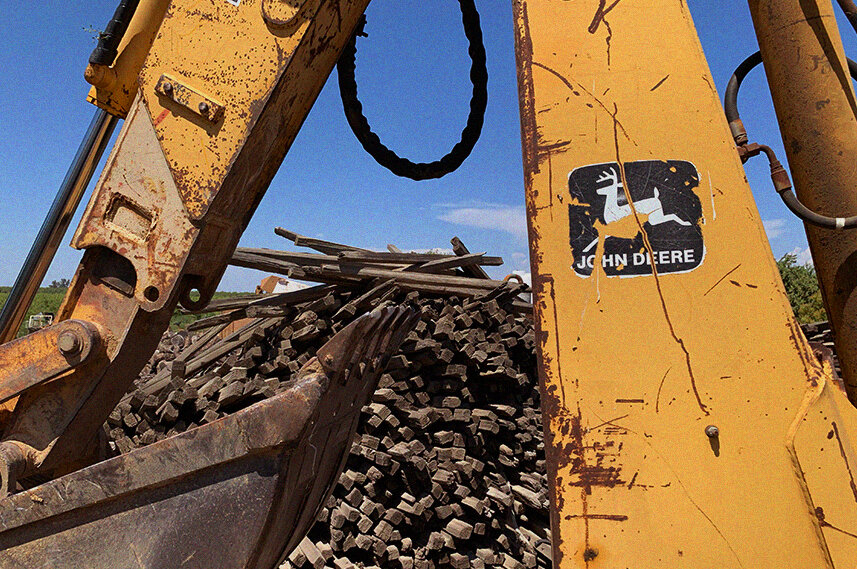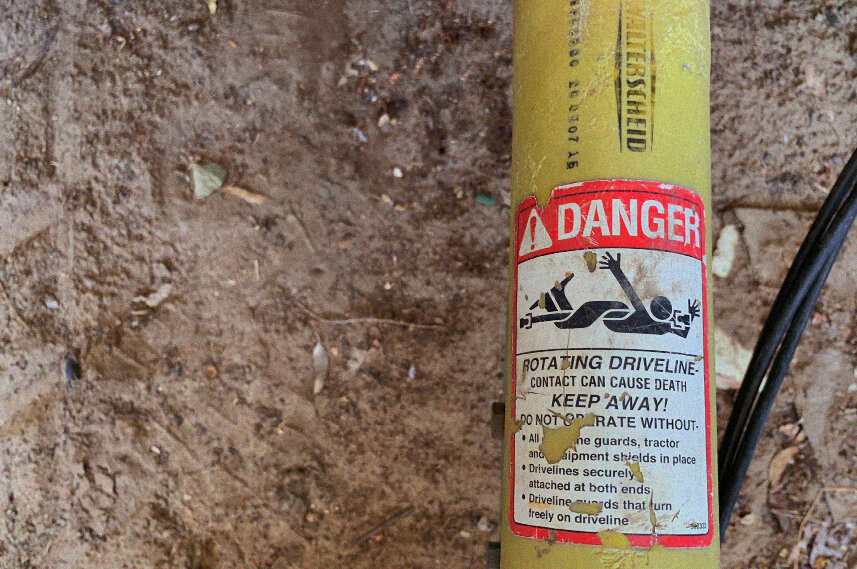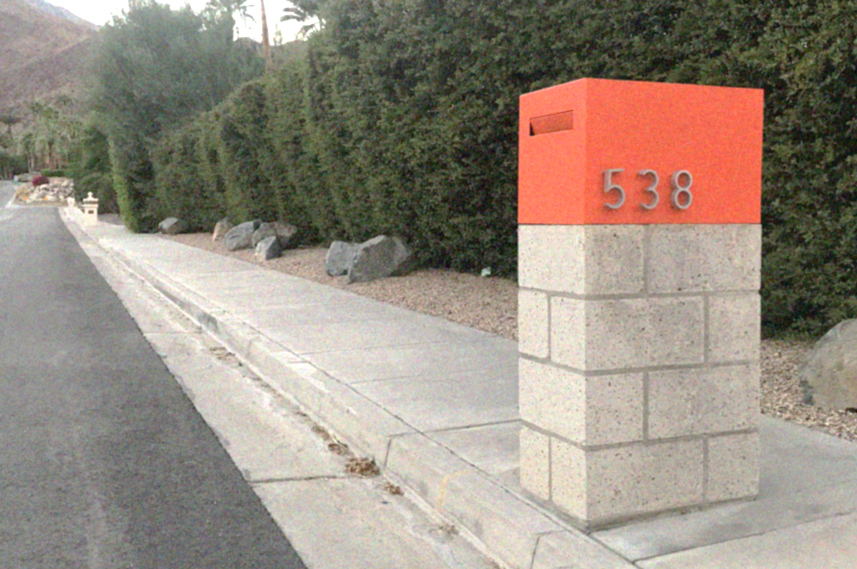My family owns a handful of acres of almond orchards in California’s central valley. Couldn’t help but notice the beauty in the marketing and communications of machines and their warnings.
Tim.
Tim Cook spoke to the marketing team today at Apple's Sunnyvale campus. I was fortunate enough to get a good seat, though photography or recording of any kind are strictly forbidden inside any Apple building. I tried to capture what I could through notes and before posting should add the disclaimer that while I tried my best to capture word for word, there were times - I'm sure - where I was unable to do so with 100% accuracy. Here are some snippets of what Tim had to say:
"There's a difference between loving to work and loving the work."
"I came out [of the closet] for the kids who were being bullied and who were considering suicide."
"Each generation of people has a responsibility to advance and enlarge human rights. To treat one group of people with less respect and dignity than any other is simply unacceptable."
"We [Apple] have a culture of debate over products, not personalities. I have no patience for the latter."
"When I was [working] at IBM, there were meetings. But all the decisions were being made outside of those meetings. I don't think that's the way to drive innovation."
"If I'm the smartest person in the room, I always worry."
"We have the best customers in the world. When they love us, they tell us. When they hate us, they tell us. They tell us because they care. When I was [working] at Compaq, if customers hated us, they'd buy a Dell."
"If there's a worry in the world that we can control or influence, I divert my worry into 'what can I do?'"
"Democracy is only one generation away from extinction. Elected officials are elected to serve the people, too many have forgotten that."
"I miss Steve everyday."
Palm Springs and the Design Experience
The reputation of Palm Springs as a city ‘trapped in the past’ has always frustrated me. While it’s true the city values its history and encourages mid-century preservation, its contribution to American design is much too insightful to be dismissed as an experiment of the past.
Like most desert settlements, it has been an escapist destination that sees its population fluctuate with the weather. 2,000 years ago, even the Cahuilla people, who occupied the region, often emigrated to cooler climates during the summers. While Palm Springs is often associated with an Old Hollywood ‘Frank Sinatra’ lifestyle, it’s modern development was ironically based in the health benefits from warm weather combined with shade from Mount San Jacinto. As health tourists began to popularized the city, it became a retreat for wealthy Los Angeles residents. Many built homes, hotels, and resorts in the city and, as a result, Palm Springs became a Mecca for the famous mid-century modern design it’s well known for.
Most famously, the Kaufmann Desert House was designed by Richard Neutra in 1946. Commissioned by the same Kaufmann that hired Frank Lloyd Wright to design Fallingwater ten years earlier, it too is a fantastic work of architecture that perfectly exemplifies a seamless indoor-outdoor experience. The home continues to be occupied as a private residence.
However, I’m equally interested in the smaller details of the city that continue to inspire designers. There is no reason a 7-Eleven in Palm Springs should look any different than a 7-Eleven anywhere else. But it does. Simply existing in this city makes one question the general expectations attached to an existence outside it.
Why shouldn't 7-Eleven be an enjoyable design experience?
Why can't delivering the mail be more pleasant?
And why should a beer run to BevMo not be just as visually satisfying as a visit to Elvis and Priscillas 1966 Honeymoon House?
These are all relevant questions to anyone designing today, and are often the questions designers forget to ask.
Palm Springs isn’t trapped in the past as much as it is still an inspiration for the future - not that the world should impersonate Palm Springs modernism but rather, as designers, we should put as much intention into the things we create as those before us. The experience of designed systems, architecture, products, and visuals should draw optimistic inspiration from Palm Springs. Balance between form and function, nature and development, control and freedom - these are valuable design principles that are often sacrificed in favor of budget, indifference, and lack of imagination.


















